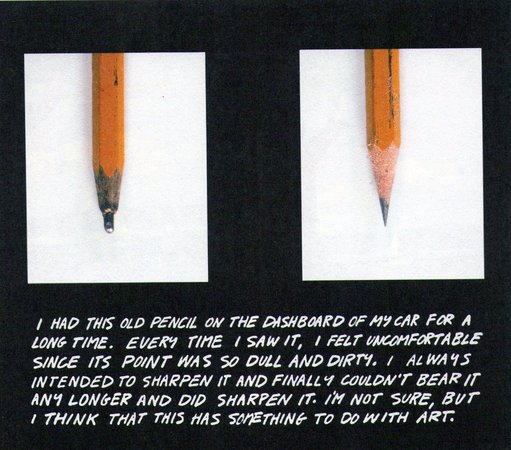
Popular culture studies combines communication studies, critical theory and cultural studies. It focuses on communication and how a culture is represented in media and society. In recent years, the field of popular culture studies has seen a significant increase in popularity and continues to grow. In today's society, it is important that the field of popular culture studies focuses on cultural and communication issues.
Critical theory
Critical theory is a term derived primarily from German social theories. It has its roots in Germany's experience of fascism as well as other social movements. However it also draws from the changes in modern capitalism. Critics such as Marx, Nietzsche, and psychoanalysis have influenced the concept of critical theory.
This branch of cultural studies emphasizes the impact of power on the production and consumption of various forms of communication. This article introduces key terms, discusses the history of the field, and addresses its central themes.
Media industry
Contemporary cultural and critical studies recognize the importance of the media industry in popular culture. Scholars are currently exploring the political, aesthetic, and social implications of media today. Scholars are also examining the relationship between the media and power structures. These studies are important because it helps us understand how popular culture impacts our lives as well as our values.

The media industry has been a central part of pop culture for decades. It was instrumental in shaping pop culture trends and helping to make stars. Ed Sullivan's variety shows, for example, were a great tastemaker and star-making vehicle. This role has been altered by the advent of more accessible media. Mass media today is accessible in many formats and without physical limitations. Anyone can reach millions of people with little or no backing.
Representation
Representation is a critical concept in popular culture studies, which focuses on the construction of a world from images. The process of representation is mediated by the speaker situated in a particular cultural setting. As such, representations don't accurately reflect reality. Instead they are the product of cultural, financial, and political relationships.
The media has been used to perpetuate racial stereotypes and ethnic stereotypes for many years. Media is particularly effective in reinforcing and creating negative stereotypes. A lack of representation within popular culture also has a negative impact on the psychological, political, as well as social lives of individuals.
Popular culture
Popular culture studies is the study and analysis of popular culture using a critical theory approach. It is a multidisciplinary field that integrates the disciplines of communication studies with cultural studies. It is a multidisciplinary field that examines the influences of popular culture on society and the individual. It is a growing field of study in colleges and universities, combining the study of film, television, and music.
This area of study is often linked to liberal-pluralist ideology. It is too optimistic in its implications. According to this ideology, the capitalist economy has created a world where everyone is able to participate in culture. The growth of mass education and leisure time, along with the availability of cheap paperbacks and records, have made popular culture an expression of the people's desires.

Social media
Recent research has examined the role social media play in popular culture. This research supports the Reflective Projective Theory, which states that popular media replicate and define societal inputs and values. Additionally, the study demonstrates the influence of social networks on the development and influence popular culture. This conference will examine how social media affect and shape culture in different contexts.
Popular culture is multifaceted and has spawned many scholarly fields. Others are concerned with the study and analysis of mass media. While others are interested in popular culture and its effect on society, some focus only on that aspect. Raymond Williams, a prominent cultural critic, has contributed a lot to the study on mass media. Their work is a classic example of cultural criticism. In particular, it looks at how mass media corporations organize their production and disseminate their products, and how they exert influence on other organizations.
FAQ
What is pop culture?
Pop culture is all around. Pop culture is everywhere you go: radio, television, film, music and magazines. It is everywhere we go, 24/7. Pop culture influences everything, from clothes to music and language to politics and religion. What exactly is pop culture? Wikipedia states, "Popular Culture (or Popular Culture) is the mass production of ideas and products for mass consumption." Many people think that this term applies to television shows, movies, music, fashion, and other forms of entertainment. Pop culture encompasses much more than entertainment. The term covers everything consumed by the masses. It includes video games, sports and toys, fast food, political campaigns, and many more.
Why is pop music so beloved?
Pop music is loved because it is enjoyable! It makes you feel happy and gives you a great sense of freedom. Pop music allows people to be free from any limitations and think about only themselves. Pop music is not a distraction from what they think. Pop music is so beloved because of this. People love to listen to songs that are positive and upbeat. Listening to upbeat music can help you get out of a slump. You may find yourself singing along. Pop music is a success because of this.
What is popular culture in music?
Popular Music Culture takes many forms.
Music and lyrics are the main characteristics of popular music culture. It also covers the influence of visual media like film, television, fashion advertising, and so on, on artists' careers as well as public perception.
It's also about how fans interact with their favorite artists.
A key element of popular music culture are the "superstars", which are musicians who have achieved fame or fortune.
These superstars often transcend genres and become cultural icons, and their popularity has influenced the evolution of popular music itself.
Other elements of popular culture in music include:
* The rise of recording technology -- from acoustic instruments and electric guitars to microphones and microphones.
* The invention of record players and radios;
* The birth and rise of rock & roll.
* The introduction of television and film
* The advent MTV and VH1
* The creation of internet.
How can I make pop culture part of my marketing strategy
You need to examine the trends in pop culture to learn how you can use it in your marketing strategy.
Let's say, for instance, you wanted to promote a movie. What kind of promotion would you be able to run?
A trailer could be created using clips from the film. You could even find a clip that features one of your products or services and includes it in the video.
Or perhaps you could create a parody version of the trailer using other famous films.
You can use the movie's plotline as a basis for your promotional campaign, if you are promoting a product/service related to that film's theme. You might promote a product that can help astronauts remain healthy while in space.
If you had a business connected to the movie's theme, you could run promotions based on the plotline. If your company sells food products, you might offer customers free samples if they buy tickets to the movie.
How did pop music get started?
It was an accident. It was an accident. The first song was accidentally written when someone knocked over the piano while playing on New Year's Eve 1920.
The recording company liked what they heard and decided to release it as a single.
This was the first single to be recorded.
Pop music has been the most loved form of musical entertainment since then.
What is Tik Tok pop culture like?
The answer is yes It's not just for teenagers anymore. These videos can be used by anyone to express their feelings, share life moments, and show support.
More than 200 million people use the app every day all over the globe. And this number grows by millions each day.
TikTok gives brands the opportunity to build meaningful relationships and connect with customers through this amazing platform.
TikTok is also home many influencers, who have built large followings on the platform. These creators produce original content that engages people around the world.
What are you waiting to do? If you want to take advantage of this trend, here are four ways to do it.
-
Make Viral Content
-
Engage Influencers
-
Use Visuals Effectively
-
Be creative with your audience
Who is the inventor of Pop Music?
Frank Zappa invented the concept. Pop music was the name he used to describe his music.
He said that his goal was to make music that is accessible to everyone. This is why he called the music "pop music".
Zappa also invents the phrase "You'll know it's pop when ..."". It means that something is extremely popular if you have many people enjoying it. For example, Michael Jackson's Thriller album is one of the best-selling albums ever.
Zappa's definitions are very different to the present definition of pop music. Pop music can include all music. However, in the past, only certain genres of music were considered to be pop.
Statistics
- Recently, the market share across Western Europe has ranged from 60-75% (Hopewell, 2013). (socialsci.libretexts.org)
- Yet a Nielsen study shows they account for 42% of the country's most-watched content on streaming services. courtesy Nielsen (npr.org)
- For example, the term hater meaning someone who strongly undermines or criticizes others, often due to pathetic jealousy, likely emerged from hip hop culture, such as the term playa hateras, used by influential rapper Biggie Smalls as early as 1995. (simplicable.com)
- Latinos represent roughly 19% of the U.S. population. (npr.org)
- Less than a decade later, that statistic rose to 90% (Dager, n.d.). (socialsci.libretexts.org)
External Links
How To
What is pop cultural in movies?
Popular Movies Culture is a collection of all things entertainment including books and magazines, newspapers, television programmes, websites, blogs social media, apps, games and more.
Movies can be divided into three types: comedy/dramatic, horror (action/aventure), fantasy, science fiction and romance.
Movie plots usually follow a predictable sequence of events that leads to a satisfying ending.
The success of a movie will depend on its ability to follow this formula.
Some of the most common plot points are:
-
The protagonist must overcome obstacles in order to reach his/her goal.
-
The antagonist is the one who opposes protagonist;
-
A moral dilemma that forces the protagonist to make a choice.
-
A twist ending that changes everything.
You may have to reevaluate the outline or concept of your story if it doesn't fit within one of these categories before you start writing.
Pay attention to these questions:
-
How do I establish my setting?
-
What does my protagonist want?
-
Why should readers care what my story is about?
-
Where is my life going?
-
Who is my main character?
-
Is there any conflict?
-
What is its climax?
-
What is my resolution?
-
Is the ending happy?
-
Do I have to introduce new characters
-
Is my story set in multiple settings?
-
Are there subplots to the story?
-
Are there any major themes?
-
Can I tell the whole story in one chapter?
-
Am I using dialogue effectively?
-
Does my language sound clear and simple?
-
Is my vocabulary appropriate for this context?
-
Are you using active voice rather than passive voice?
-
Are there any spelling mistakes?
-
Is my grammar correct?
-
Are there too many adverbs?
-
Is there anything I could do to improve this?
-
After I finish editing, what's my first impression?
Your job is more than just to write a book. It is also about getting it published.